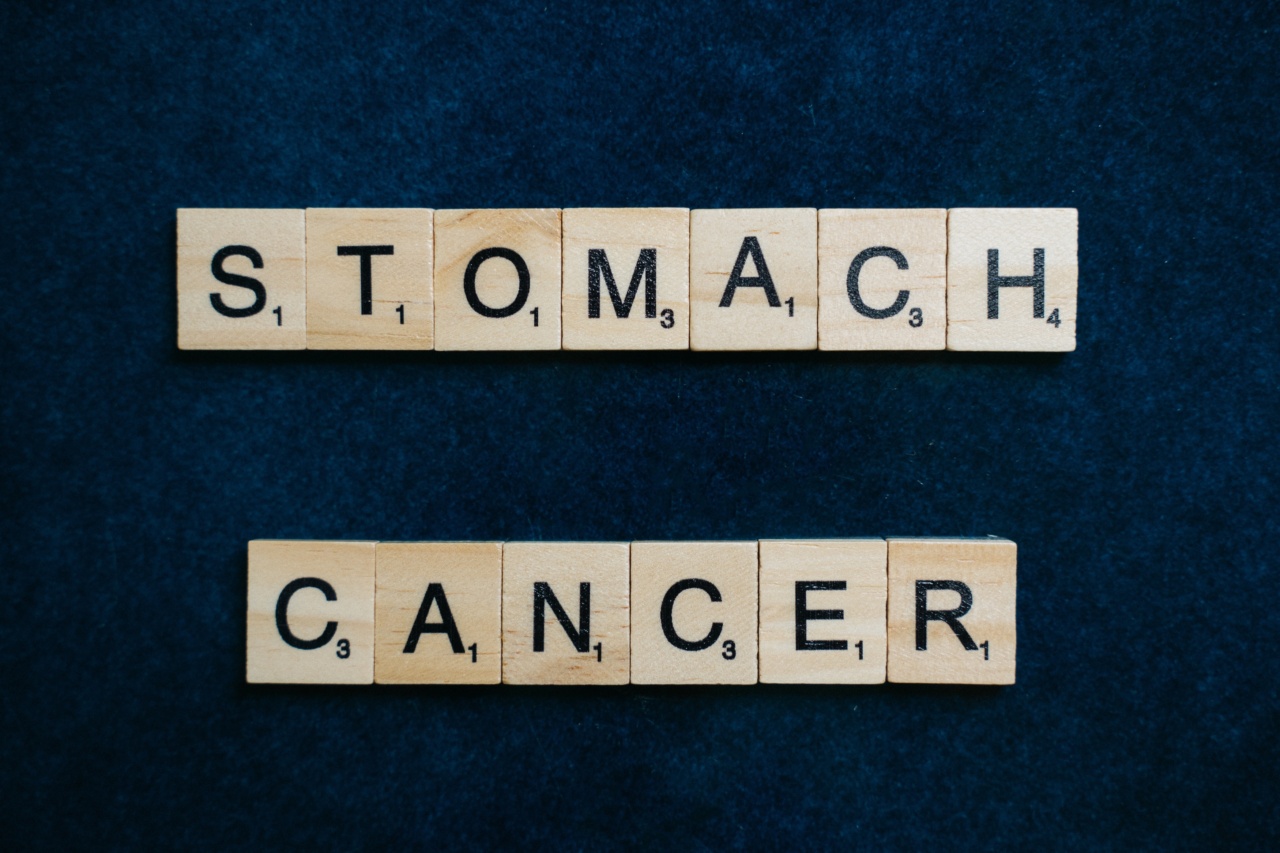Stomach and esophageal cancers are two of the most common types of cancers affecting the digestive system. Early detection and prevention play a crucial role in managing these diseases.
Identifying the risk factors associated with stomach and esophageal cancers is essential for effective prevention strategies, timely diagnosis, and better treatment outcomes. This article explores the importance of identifying these risk factors and their impact on the development of stomach and esophageal cancers.
Risk Factors for Stomach Cancer
Stomach cancer, also known as gastric cancer, can arise from abnormal cells in any part of the stomach. Several risk factors have been identified, which significantly increase the chances of developing this malignancy.
1. Helicobacter pylori Infection
One of the primary risk factors for stomach cancer is infection with the bacteria Helicobacter pylori. This bacterium can cause chronic inflammation in the stomach lining, leading to the development of cancer cells over time.
2. Diet and Lifestyle Choices
Poor dietary choices, such as a high intake of salted, smoked, or pickled foods, increase the risk of stomach cancer. Additionally, a diet low in fruits and vegetables reduces the protective effect of antioxidants and other cancer-fighting compounds.
Smoking, excessive alcohol consumption, and obesity also contribute to an elevated risk.
3. Family History and Genetics
Individuals with close relatives who have had stomach cancer are more likely to develop the disease themselves. Certain inherited gene mutations, such as CDH1, have also been associated with an increased risk of stomach cancer.
4. Age and Gender
Stomach cancer is more common in older adults, with the average age of diagnosis being 68 years. Men are more susceptible to this type of cancer than women.
5. Pernicious Anemia
Pernicious anemia, a condition characterized by vitamin B12 deficiency, has been linked to an increased risk of stomach cancer. This is due to the underlying autoimmune process that damages the stomach lining.
6. Previous Stomach Surgery
Individuals who have undergone previous stomach surgery, such as for peptic ulcers or benign polyps, have an increased risk of developing stomach cancer.
Risk Factors for Esophageal Cancer
The esophagus is the muscular tube connecting the throat to the stomach. Several risk factors contribute to the development of esophageal cancer.
1. Gastroesophageal Reflux Disease (GERD)
Chronic acid reflux, a condition commonly known as GERD, can lead to a condition called Barrett’s esophagus. This pre-cancerous condition significantly increases the risk of developing esophageal cancer.
2. Smoking and Alcohol
Smoking and regular heavy alcohol consumption are major risk factors for esophageal cancer. When combined, their harmful effects multiply, further raising the likelihood of developing the disease.
3. Obesity
Obesity, particularly with excess abdominal fat, is a significant risk factor for esophageal cancer. Fat cells release hormones and inflammatory substances that promote tumor growth and progression.
4. Diet and Nutrition
A diet lacking in fruits and vegetables and high in processed meats, fried foods, and sugary beverages increases the risk of esophageal cancer. These dietary choices often lead to weight gain, further exacerbating the risk.
5. Previous Radiation Therapy
Individuals who have undergone radiation therapy to the chest, particularly for other cancers, have an increased risk of esophageal cancer later in life.
6. Age and Gender
Esophageal cancer is more commonly diagnosed in individuals over the age of 55, with men being more susceptible to the disease than women.
The Importance of Identifying Risk Factors
Identifying the risk factors associated with stomach and esophageal cancers is vital for several reasons:.
1. Prevention and Lifestyle Modifications
By knowing the risk factors, individuals can make informed decisions about their lifestyle choices. They can adopt healthier habits, such as quitting smoking, reducing alcohol consumption, and improving their diet.
By making these positive changes, the risk of developing stomach and esophageal cancers can be significantly reduced.
2. Early Detection and Screening
Understanding the risk factors helps healthcare providers identify individuals who may benefit from regular cancer screenings. For example, individuals with a higher risk of stomach cancer can undergo endoscopic examinations or H. pylori testing.
Similarly, those at risk for esophageal cancer can undergo regular upper endoscopies to detect any early signs of the disease.
3. Targeted Prevention Strategies
Identifying the risk factors also allows for the development and implementation of targeted prevention strategies. Public health initiatives can focus on educating high-risk populations about lifestyle modifications and early detection methods.
This can lead to a decreased incidence of stomach and esophageal cancers in the long run.
4. Genetic Counseling and Testing
Some risk factors, such as family history and specific gene mutations, may warrant genetic counseling and testing.
These measures can help individuals understand their genetic predisposition to stomach and esophageal cancers, allowing them to make informed decisions and take appropriate preventive actions.
Conclusion
In conclusion, identifying the risk factors associated with stomach and esophageal cancers is of utmost importance for both individuals and public health.
By understanding these risk factors, individuals can make necessary lifestyle modifications, undergo regular screenings, and take appropriate preventive actions. Healthcare providers and public health agencies can also develop targeted strategies to promote awareness, early detection, and effective prevention of these cancers.
Ultimately, these efforts can contribute to reducing the burden of stomach and esophageal cancers worldwide.





























